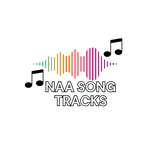We will go to talk about Agile strategies aligning with the creative spirit of developers. It is not just about strings where developers use agile methodologies as well as their paint brushes and palettes to craft software masterpieces. Codecraft: Agile strategies for crafting exemplary software. Let’s explore how Agile strategies align with the creative spirit of developers and turn the process of coding into a journey of craftsmanship.
Canvas of the Agile Developers
Once imagine the Agile developer’s canvas as an artist’s sketchbook. Developers lay the foundation in this place for their creations. Vivid colors on this canvas are user stories, sprint planning, and retrospectives, and it guides developers through the creative process. This representation ensures that the development journey is not just a technical process but also a canvas filled with the aspirants and visions of the creators.
Also Read:- gamerxyt.com categories | Can Tonsils Grow Back After Being Removed? – Tymoff
Practical Considerations
when you fill the Agile Developers canvas then consider it not just as a planning tool but as a living document that evolves with the project. You have to regularly revise and update the canvas during retrospectives to reflect new learnings and continuous changes in project goals. This approach will ensure that the canvas stays relevant and continues to guide the team through the entire creative journey. Encourage your teams to use the Agile Developers canvas as a communication tool. You can display it prominently in team spaces to serve as a constant reminder of the project’s vision and priorities. The visual representation of Codecraft can align team members, fostering a shared understanding and commitment to the creative process.
Refactoring as Sculpting
You can think of refactoring as a sculptor refining their masterpiece. Developers including artists can continuously shape and refine their code to enhance its quality and elegance. It is not about just fixing bugs, it’s about transforming the code into a work of art. The section encourages developers to view refactoring as a form of creative expression, it provides practical tips for chiseling away imperfections and creating code that’s not just functional but also beautiful.
Practical Considerations
For user stories incorporate refactoring into the definition of done(DOD). This ensures that refactoring is not treated as a separate task but it is an integral part of delivering quality code with each interaction. Users have to promote a mindset shift from technical debt to considering it an opportunity for creative expression. You can encourage developers to share their refactoring stories and celebrate instances where code was transformed into something more elegant and main table. Also you can suggest organizing occasional refactoring workshops where your team members collaboratively explore and refactor specific parts of the codebase. This will not only enhance collective knowledge but it also fosters a sense of shared responsibility for the overall craftsmanship of the code.
The Symphony of Continuous Integration

In this world of software development continuous integration is like the conductor of a symphony bringing harmony to the integration of various code contributions. Automated testing becomes a virtuoso and ensures the quality of the software’s symphony. Real world examples include painting a picture of a well-coordinated orchestra of developers each contributing to a harmonious composition of code that resonates with excellence.
Practical Considerations
Give some time to discuss integration strategies, potential challenges and how each team member’s contributions will harmonize within the larger development symphony. You have to highlight the role of feedback loops within the continuous integration process. The quick and fast feedback on integration results helps developers course correct early and prevents dissonance in the overall symphony. Also encourage the use of visual dashboards displaying the status of builds and tests. This will allow team members to appreciate the collaborative effort and progress made in orchestrating a seamless software symphony.
Also Read:- Shared joy is a Double Joy; shared Sorrow is Tymoff | The Correct Spelling is School, Not School. Some Pe -Tymoff
Users Stories as the Narrative Threads
These are the threads that weave through the fabric of software development . Instead of thinking of dry technologies, think of them as the characters in a story. This section usually delves into the art of crafting compelling user stories and transforming them from mere requirements into engaging narratives. Developers can create software that tells a meaningful tale by infusing creativity into these stories, developers can create software that tells a meaningful tale capturing the attention and satisfaction of users.
Practical Considerations
Advocate for user story workshops that involve cross functional team members and this approach ensures that diverse perspectives contribute to crafting meaningful narratives fostering a sense of inclusivity in the creative process. Promote the storytelling techniques within the team. Encourages the developers to share their favorite user stories emphasizing the impact on end users and see how each story contributes to the overacting narrative of the software. Consider it implementing a user story showcase during sprint reviews where developers present the narratives behind completed user stories. It will not only celebrate achievements but also reinforce the connection between code and the meaningful stories it helps tell.
Conclusion: Codecraft: Agile strategies for crafting exemplary software
Developers embark on the agile journey they just do not write code but create something meaningful. The canvas agile developers, refactoring as sculpting the symphony of continuous integration and user stories as narrative threads provide the tools for developers to transcend the technicalities and embrace the artistry of their craft. It is about delivering exceptional software and also about contributing to the evolving narrative of software development as a creative and human centered art form. Developers by using this software become not just coders but artists, each line of code is a stroke on the canvas of digital innovation.

